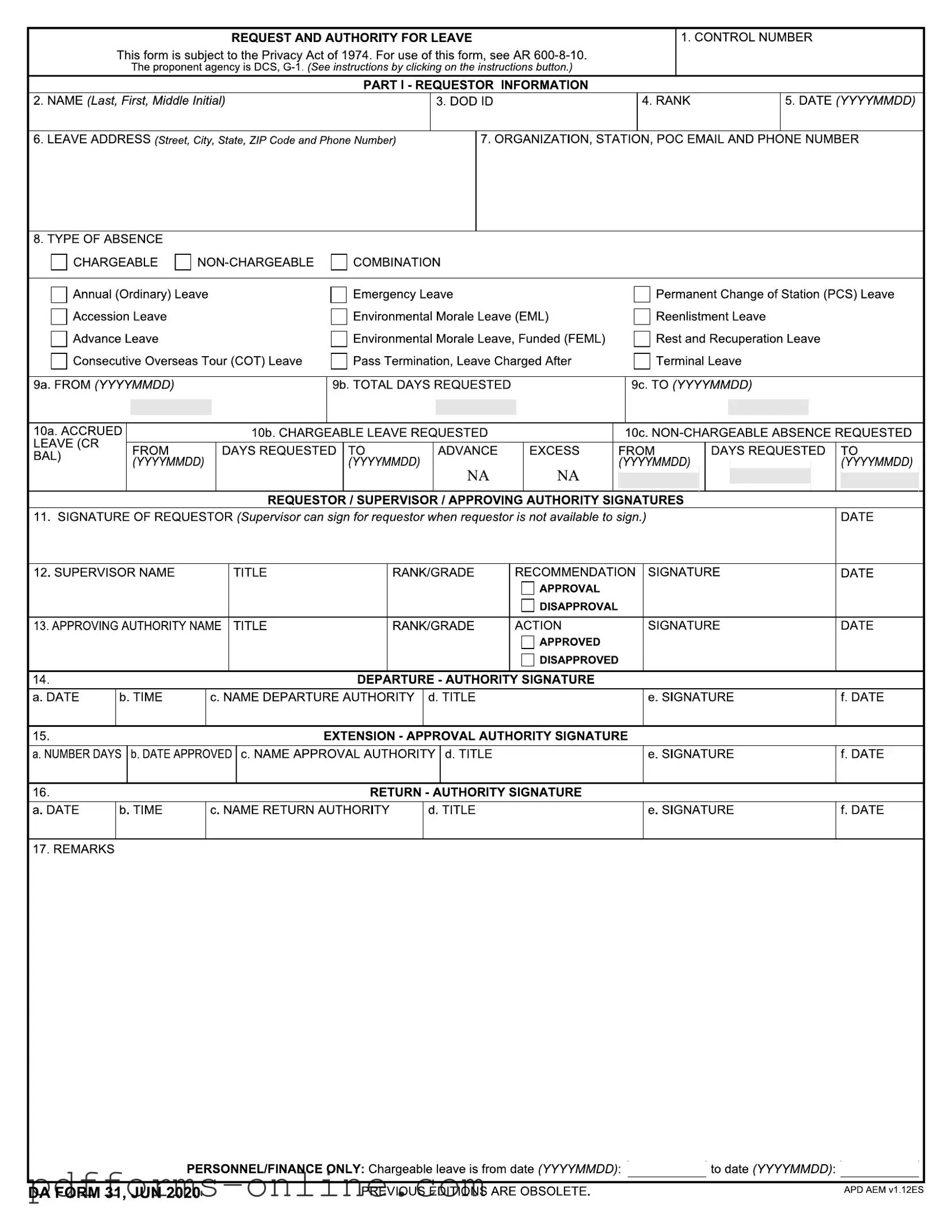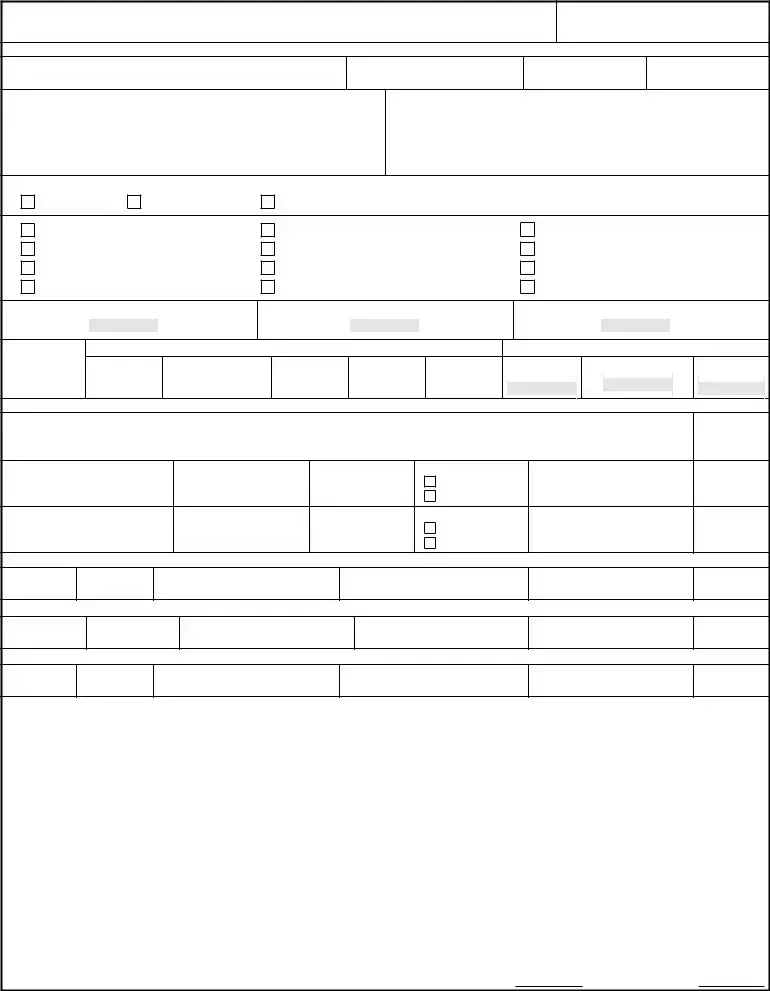The DA Form 31, which serves as a request for leave, shares similarities with the Standard Form 50 (SF-50). The SF-50 is used primarily for personnel actions, including changes in employment status. Both forms require detailed information about the individual, such as name and identification number. While the DA Form 31 focuses on leave requests, the SF-50 documents employment-related changes, making them complementary in managing personnel records. Each form necessitates signatures from appropriate authorities, ensuring that all requests and actions are verified and approved before proceeding.
Another document comparable to the DA Form 31 is the Leave and Earnings Statement (LES). The LES provides service members with a comprehensive overview of their pay, leave balances, and deductions. While the DA Form 31 is specifically for requesting leave, the LES tracks leave accrual and usage. Both documents are essential for service members to understand their leave status and financial compensation. The LES can also highlight how much leave has been used, which can inform future leave requests submitted via the DA Form 31.
The Request for Leave form (often used in civilian employment) mirrors the DA Form 31 in its purpose of requesting time away from work. This civilian form usually requires the employee to specify the type of leave, duration, and reason for the absence. Similar to the DA Form 31, it often requires approval from a supervisor or manager. The two forms share the common goal of managing employee time off, ensuring that both military and civilian workplaces maintain operational efficiency while accommodating personal needs.
The Family and Medical Leave Act (FMLA) form is another document that aligns with the DA Form 31 in its function of requesting leave. The FMLA form is utilized by eligible employees to request unpaid, job-protected leave for specific family and medical reasons. Like the DA Form 31, this form requires detailed information about the employee and the nature of the leave. Both forms emphasize the importance of communication and approval from management, ensuring that the leave is properly documented and authorized.
The Application for Leave of Absence (often used in educational institutions) is akin to the DA Form 31 as it is designed for individuals seeking to take time away from their responsibilities. This application typically requires details about the reason for the leave and the expected duration. Both forms facilitate the process of requesting time off while ensuring that the necessary approvals are obtained. The educational application, like the DA Form 31, serves to maintain a record of absences, which is essential for administrative purposes.
Lastly, the Military Leave Form, often used by National Guard or Reserve members, is similar to the DA Form 31 in that it documents requests for leave related to military duties. This form captures information about the member's service obligations and the type of leave requested. Both forms require approval from designated authorities, highlighting the importance of adherence to military regulations and procedures. They serve as critical tools for managing leave while ensuring that operational readiness is maintained.

